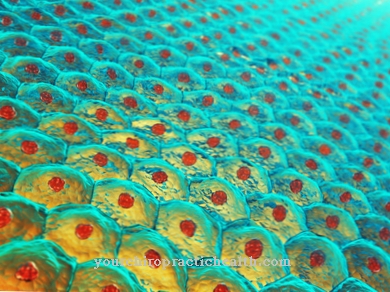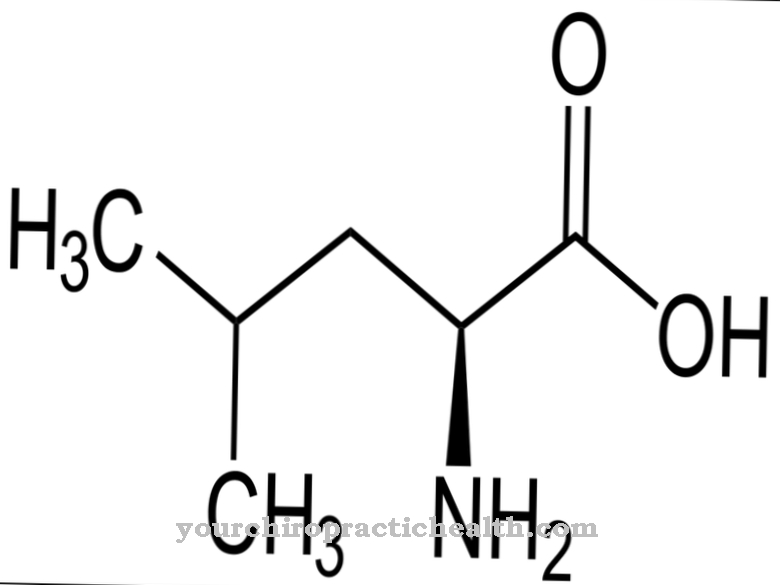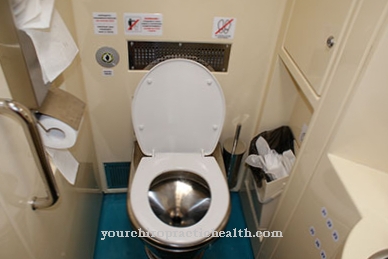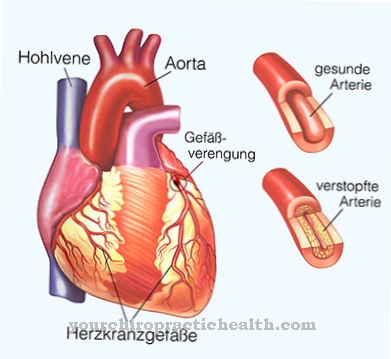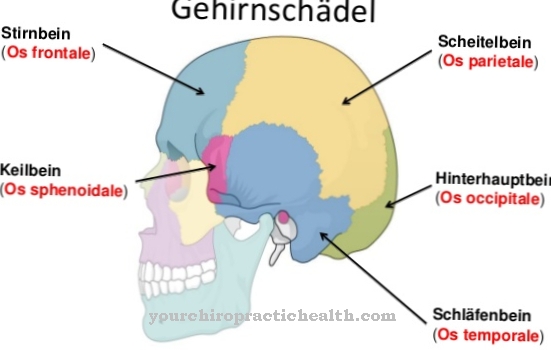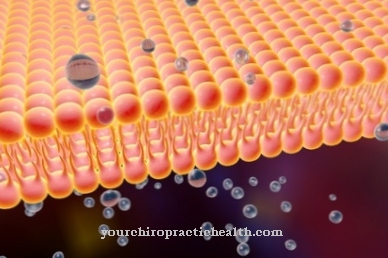A Urethral stricture or Urethral constriction is a narrowing of the urethra (urethra), which can be congenital or acquired and is usually treated surgically. Mostly men are affected by real urethral strictures.
What is a urethral stricture?

© gdmohamed - stock.adobe.com
A congenital or acquired narrowing of the urethra is called a urethral stricture. Urethral strictures by scarred constrictions must be differentiated from stenoses (constrictions) due to benign prostatic hyperplasias (enlarged prostate).
Most often, strictures are localized in the prostatic, membranous, bulbar or penile urethra and in the navicular fossa. Due to the stenosis of the urethra, complete emptying of the bladder is only possible to a limited extent. This leads to an increased susceptibility to urinary tract infections, which, if the course is pronounced, can lead to a backlog of urine in the kidneys and thus to kidney damage.
A urethral stricture manifests itself symptomatically in the form of a weakened urine stream, which can be deformed, twisted or split like a watering can, and "dripping" after micturition (urination). Pain during micturition, on the penis or the vagina and in the area of the perineum are also characteristic of urethral strictures.
causes
In the case of urethral strictures, a fundamental distinction can be made between acquired and congenital constrictions. Congenital stenoses include malformations in the area of the external genitalia such as hypospadias, in which the urethra is not protected by the erectile tissue.
Acquired urethral strictures are primarily caused by injuries resulting from accidents (straddle trauma, pelvic fractures) or manipulations or surgical interventions on the urethra. In particular, endoscopic interventions via the urethra (anastomotic narrowing after radical surgery on the prostate, urinary bladder endoscopy) and long-term urinary catheters are risk factors for urethral constrictions.
In addition, bacterial urethral infections (urethritis, gonorrhea), pathological changes in the connective tissue (balanitis xerotica obliterans, lichen sclerosus) and tumors in the area of the urethra and the surrounding structures can cause urethral strictures.
You can find your medication here
➔ Medicines for bladder and urinary tract healthSymptoms, ailments & signs
A urethral stricture prevents the bladder from emptying completely. Although there is a constant urge to urinate, the urine stream is very weak. Sometimes the beam also splits or twists. Often it comes to dribbling after urination. The backlog of urine often causes pain when urinating.
In addition, residual urine remains in the bladder due to the incomplete emptying of the bladder. This increases the risk of urinary tract infections. As a result, it is not uncommon for cystitis to develop, which increases the pain and burning sensation when urinating and at the same time leads to an urge to urinate at night. Sometimes the urine is colored red.
Chronic overstretching of the bladder also damages the bladder muscles. In severe forms of a urethral stricture, complete urinary retention can also occur. The bladder is full and can no longer be emptied. There is only an involuntary trickling, which is caused by a so-called overflow. The overflowing bladder causes severe and unbearable pain.
It is a medical emergency that needs immediate attention. Prolonged backlog of urine can lead to kidney failure and men can develop prostate inflammation or inflammation of the epididymis. A serious complication is the expansion of a urinary tract infection into a life-threatening urosepsis (blood poisoning), which often manifests itself in confusion, fever and finally even a circulatory shock.
Diagnosis & course
A urethral stricture is diagnosed based on the characteristic symptoms in the anamnesis. The diagnosis is confirmed by measuring the flow and pressure of the urine during micturition. Microhematuria (blood in the urine), which can be detected microscopically or with the help of the Sangur test, also indicates a urethral stricture.
Any residual urine after micturition, changes in the bladder, urethra and kidneys, and the thickness of the bladder wall can also be determined using ultrasound. The stricture can be localized and its extent determined by means of an X-ray under a contrast medium (retrograde urethrography). Any ambiguities can then be resolved with an endoscopy of the urethra (urethroscopy).
In general, a urethral stricture has a good prognosis. In order to avoid long-term complications such as kidney damage or complete urinary retention, the narrowing should be diagnosed and treated at an early stage.
Complications
In most cases, the urethral stricture occurs almost only in men. The narrowing of the urethra can lead to different symptoms. The urine stream is weakened by the disease and urination is therefore only possible to a limited extent, so that the person concerned usually has to go to the toilet more often.
It is not uncommon for the urethral stricture to lead to a bladder infection. This is associated with severe and stabbing pain and extremely restricts the patient's quality of life. There is also pain and other discomfort when urinating. This is usually associated with a strong burning sensation. The pain when urinating also causes psychological discomfort and irritability in most patients.
Less fluid is deliberately taken in to avoid this pain. This can lead to dehydration. The treatment of the urethral stricture is carried out by a surgical procedure and does not lead to particular complaints or complications. After the procedure there are no complaints either and the pain subsides. A possible tumor can also be removed without complications. Life expectancy is not affected or reduced by the urethral stricture.
When should you go to the doctor?
A urethral stricture does not self-heal, so the disease must always be treated by a doctor. It can only be combated through surgery. Since the urethral stricture is usually congenital, the symptoms appear at a very young age.
Those affected suffer from a very weak urine stream. Urine still remains in the bladder, so that people have to go to the toilet relatively often. An examination should be carried out for these complaints. Frequent inflammation of the bladder also suggests a urethral stricture. These are accompanied by pain or a burning sensation when urinating.
If a urethral stricture is suspected, a urologist should be consulted. This can usually also carry out the treatment that does not lead to particular complications. This completely alleviates the symptoms. Since this disease is particularly common in men, they should consult a doctor if symptoms occur.
Doctors & therapists in your area
Treatment & Therapy
As a rule, a urethral stricture is treated surgically. In principle, two surgical procedures are available for this, the choice of which depends on the type and extent of the stenosis and the general state of health of the person concerned.
In the so-called urethrotomy (urethral slit), a urethrotome is inserted into the urethra either blindly (urethrotomy according to Otis) or under sight (urethrotomy according to Sachse) and this is slit through an incision in the area of the stricture. To avoid complications (particularly in the case of a Sachse urethrotomy), a urinary catheter is then placed, which remains for several days.
To reduce the risk of recurrences, a gel containing cortisone can be injected into the affected urethra over this. If the surgical method does not lead to the desired success, if recurrences occur or if there are elongated strictures, an oral mucosal repair is usually indicated. As part of this oral mucosal plasty, the urethra is opened over the constriction and a piece of the oral mucosa (from the lower lip or cheek) of the corresponding size and length is sewn in.
A catheter is then placed to splint and keep the urethra open for about eight days and an abdominal wall catheter to empty the bladder. If a urethrography shows that the bladder has been emptied completely and without problems, the abdominal wall catheter is removed (after about three weeks).
In the case of strictures up to two centimeters in length, the narrowed area can be surgically removed and the urethral ends sutured. If the narrowing is due to a tumor, the therapeutic measures for the urethral stricture depend on the tumor treatment.
Outlook & forecast
The prospect of a cure depends heavily on the time of diagnosis. Basically, the earlier a urethral structure is treated, the cheaper the outcome. In addition, the degree of constriction also plays a role in the chances of success. The lower it turns out, the sooner a symptom-free life can be successful. Statistically, the bulbar tap tube stricture has the best prognosis with a 50 percent healing rate.
It appears problematic that the narrowing occurs again in many cases. Even then, patients and doctors must act quickly. With recurring interventions after the initial treatment, however, the chance of a cure decreases. In the long run, the quality of life suffers. The urine build-up attacks the kidneys. Complete loss of kidney function can occur after years. Sometimes new interventions have a negative effect on everyday life. People urinate in significantly reduced quantities and often complain of burning and inflammation.
Overall, the picture is different: If the first intervention takes place early, patients usually remain symptom-free for a lifetime. However, other sufferers must be treated again. The chances of a complete healing can be rated as mixed.
You can find your medication here
➔ Medicines for bladder and urinary tract healthprevention
A urethral stricture can be prevented by avoiding triggering factors. For example, infections of the urethra should be treated promptly and consistently or prevented by suitable protective measures (gonorrhea) in order to avoid strictures of the urethra.
Aftercare
In the case of a urethral stricture, follow-up measures are severely limited in most cases. Here, the person concerned is primarily dependent on a quick diagnosis and subsequent treatment so that there are no complications or other complaints. The earlier the disease is recognized and treated, the better the further course will usually be.
Since the urethral stricture cannot heal itself, the patient should consult a doctor at the first symptoms and complaints of the urethral stricture. In most cases, this disease is treated with a minor surgical procedure. The person affected should definitely rest after such an operation and take care of their body.
Exertion or stressful activities should also be avoided in order not to unnecessarily burden the body. The disease does not reduce the life expectancy of the person affected if it is recognized and treated in time. Since the urethral stricture can also lead to psychological upset or depression, the support and care of your own family or friends is very important. However, a doctor should always be consulted in the event of serious psychological disorders.
You can do that yourself
If a urethral stricture has been found, those affected can take a few measures themselves to alleviate the symptoms and promote healing.
First of all, it is important to cure any accompanying symptoms such as bladder infections or urinary retention. This applies to bed warmth and wearing sufficiently warm clothing. A healthy and balanced diet can help recovery. In the case of severe complaints, the individual symptoms should be clarified by a doctor and, if necessary, treated with medication.
After an operation on the urethra, rest and bed rest apply. Those affected should take sick leave for at least a week and avoid strenuous physical activity during this time. In addition, the surgical wound must be cared for according to the doctor's instructions so that no wound healing disorders occur or scars remain.
If symptoms arise again after the treatment, it is best to speak to the responsible doctor. The procedure may need to be re-operated or the urethral stricture may have a serious cause that has not been identified. Finally, it is important to avoid another urethral stricture. This is achieved by treating urethral infections promptly and consistently. Ideally, infections are prevented by suitable protective measures.


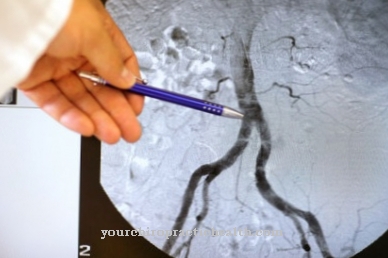

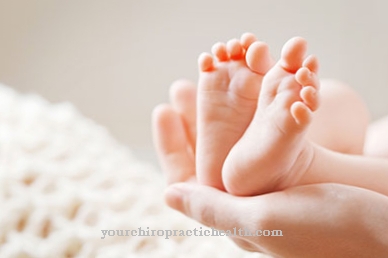

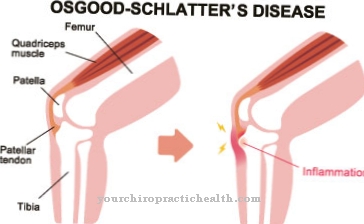

.jpg)
